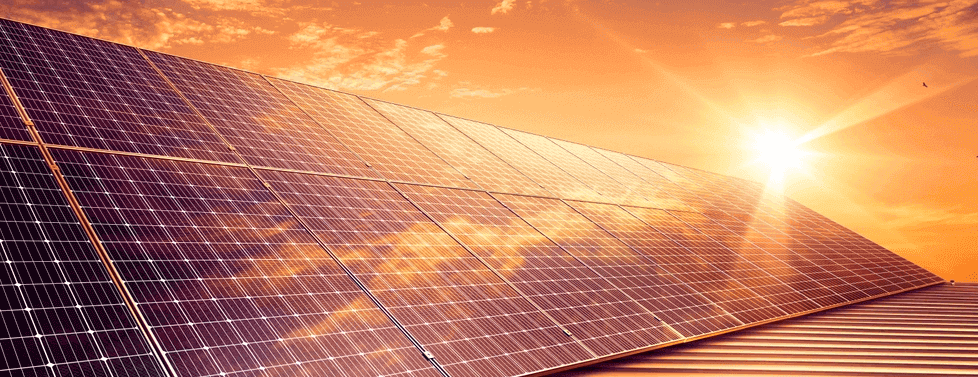In this article, Canstar Blue takes a look at the average bill credits that Australians with solar panels could be earning on their electricity bills. The savings you may make from installing solar panels in Australia will depend on the size of your system, the energy plan you choose, the amount of electricity your household uses and how that electricity is used.
With those varying factors — the size of the panels, whether or not you install storage and even the shape of your roof — it’s hard to know what savings you should expect from your investment. Installing solar should mean reduced electricity costs, but by how much?
On this page:
Advertisement
Average electricity bill with solar panels in Australia
Research conducted by Canstar Blue in a pulse survey from March 2024 to September 2024 found that the average credit for households with solar panels was $123, based on survey respondents’ latest electricity bill. The largest solar rebates on bills were in Western Australia with $198 on average, while the Northern Territory reported a smaller $79 on their most recent bill.
How much money do you save with solar panels in Australia?
One of the main reasons for Australians to invest in solar is to reduce their electricity bills, but the amount of savings will depend on a variety of factors. As evident in our latest research, households with solar panels saved an average of $123 through solar credits on their last power bill.
How can I lower my solar bill?
Here are some handy tips you can consider if you’re looking to save money with solar panels:
- Consider a plan with low rates: While there are a handful of deals on the market targeted towards solar households, sometimes a higher feed-in tariff could mean higher base rates as well. Remember that you’ll still be paying for your power when your panels aren’t working, so consider whether a low-rate plan would be better suited to your usage.
- Take a look at your feed-in tariff: If you’re in a position where your solar panels are generating energy to be put back into the grid, it’s a great idea to make sure you’re getting a good feed-in tariff. Visit Canstar Blue’s feed-in tariff guide to see what’s considered generous where you live.
- Consider installing a solar battery: Solar batteries work by storing the excess solar energy generated by your panels for use at a later time. This helps to make you less reliant on the grid, which could help to reduce your electricity bills. Be mindful that solar batteries can be a hefty upfront cost, so only install them if you’re sure you’ll eventually earn back what you paid.
- Maintain your solar panels: This should be made clear by your solar installer, but solar panels require maintenance in order to remain efficient. Speak with your solar panel specialist about how regularly you should be conducting this work.
- Be energy smart: Use energy efficient appliances, keep cooling and heating to a minimum and turn off lights when you leave the room to use up as little solar energy as possible.
How much will solar save me?
Though it is hard to know exactly how much solar will save you, comparing energy plans with good solar feed-in tariffs is your best chance of capitalising on your solar panels and increasing your savings. Once you have a good idea of how long it will take for your solar panels to ‘pay for themselves’, you’ll be able to estimate how much solar will save you in the long run.
If you’re earning significantly less for your solar credits than the average, it could be worth re-evaluating your current plan. While it’s not always your solar deal that’s doing most of the damage, it can’t hurt to leverage yourself into the best position possible for savings. You can visit any one of Canstar Blue’s solar pages or have a look at deals in our comparison tool offering feed-in tariffs to get started.
Here are some of the cheapest solar-specific deals from the retailers on our database. These costs are based on the Ausgrid network in Sydney but prices will vary depending on your circumstances. We show one product per retailer, listed in order of lowest price first. Annual price estimates assume general energy usage of 3900kWh/year for a residential customer on a single rate tariff. Price estimates exclude solar feed-in tariff credits. These are products from referral partners†. Our database may not cover all deals in your area, and please check retailer websites for up to date information.
Here are some of the cheapest solar-specific deals from the retailers on our database. These costs are based on the Citipower network in Melbourne but prices will vary depending on your circumstances. We show one product per retailer, listed in order of lowest price first. Annual price estimates assume general energy usage of 4000kWh/year for a residential customer on a single rate tariff. Price estimates exclude solar feed-in tariff credits. These are products from referral partners†. Our database may not cover all deals in your area, and please check retailer websites for up to date information.
Here are some of the cheapest solar-specific deals from the retailers on our database. These costs are based on the Energex network in Brisbane but prices will vary depending on your circumstances. We show one product per retailer, listed in order of lowest price first. Annual price estimates assume general energy usage of 4600kWh/year for a residential customer on a single rate tariff. Price estimates exclude solar feed-in tariff credits. These are products from referral partners†. Our database may not cover all deals in your area, and please check retailer websites for up to date information.
Here are some of the cheapest solar-specific deals from the retailers on our database. These costs are based on SA Power network in Adelaide but prices will vary depending on your circumstances. We show one product per retailer, listed in order of lowest price first. Annual price estimates assume general energy usage of 4000kWh/year for a residential customer on a single rate tariff. Price estimates exclude solar feed-in tariff credits. These are products from referral partners†. Our database may not cover all deals in your area, and please check retailer websites for up to date information.
FAQs about solar electricity costs
| Pros | Cons |
|---|---|
| Helps reduce your energy bill | High upfront costs |
| Less reliant on grid electricity | Maximum output reliant on weather |
| Low maintenance | Less efficient over time |
Original reporting by Kelseigh Wrigley
Image Source: bombermoon/Shutterstock




Share this article